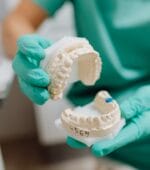Hospitals, clinics, and other facilities are already reeling from a shortage of providers and it’s hurting patients—tens of millions of Americans live in areas with shortages of primary care, dental, and mental health professionals.
Barton Blog / Healthcare News and Trends
Category: Staffing Tips Page 0
-

Why Partner with a Locum Tenens Agency for Dental Staffing?
Dental staffing solutions can lower your administrative burden and staff burnout while providing access to a wide talent pool of dentists. Read on to learn how your facility could benefit.
-

4 Ways Temporary Medical Staff Maintain Patient Care
Many healthcare facilities in the U.S. are already struggling with staffing shortages, but others have turned to healthcare staffing agencies like Barton Associates to fill in the gaps.
-

Medical Staffing Solutions: 4 Key Qualities of Top Medical Staffing Agencies
We’re diving deep into the four key qualities you should look for in medical staffing agencies and explaining how locum tenens providers can help you ensure continuity of patient care.
-

4 Tips for Seamless Locum Tenens Integration at Healthcare Facilities
Taking on locum tenens providers brings unique challenges for a healthcare facility—while locums are highly-skilled and adaptable, transitioning to a new work environment can be difficult for anyone to adjust to.
-

Top 4 Challenges Facing Healthcare Facilities in 2025
Healthcare facilities act as the backbone to maintaining good health in communities across the United States, and many Americans rely on these organizations for preventative and reactive medical care.
-

‘I Want Them to Get to Know Me’: How Michael Nich Became Barton Associates’ Most Successful Account Executive
Nich holds the record for the highest sales of any Barton Associates employee in the company’s history—an accomplishment that recently earned him the honor of being named the inaugural inductee in the Barton Associates Hall of Fame.
-

Why Choose Barton Associates for Locum Tenens Staffing over Managed Service Providers (MSPs)?
What’s the difference between Barton Associates and MSPs? Here’s the pros of working with us and what separates us from the competition.
-

Eliminating Dental Deserts and Expanding Dental Services with Locum Tenens Dentists
Dentists are not distributed equally across the country. In fact, according to the U.S. Health Resources & Services Administration (HRSA), around 58 million Americans live in areas designated as a dental health professional shortage area (HPSA).
-

Improving Hospital Staffing with Locum Tenens
Workforce challenges (such as personnel shortages) were identified as a top concern for hospital CEOs, according to a survey conducted by the American College of Healthcare Executives.









